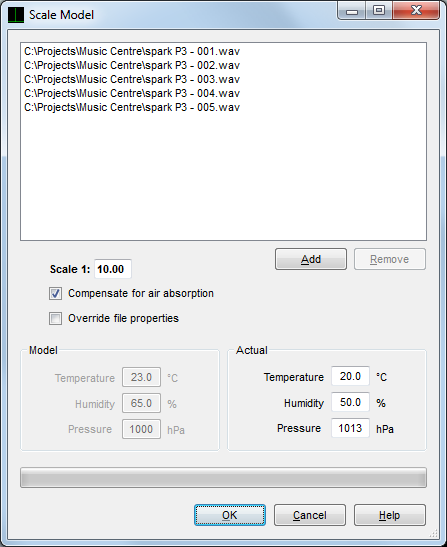Introduction

Scale models serve as valuable tools for simulating and analyzing complex acoustic environments. They provide a cost-effective and controlled means to study the sound propagation, reflections, diffraction, and absorption properties within a given space. By creating a scaled-down representation of a real-world structure, researchers can evaluate the impact of design choices on the acoustic performance, allowing for informed decision-making and optimization.
Measurement Techniques in Scale Models
Acoustic measurements in scale models involve the application of various measurement techniques to assess the sound transmission, absorption,
and diffusion properties. Here are a few commonly used techniques:
- Sound Pressure Level (SPL) Measurements involve placing microphones at specific locations within the scale model and measuring the sound pressure levels at different frequencies. This helps determine the distribution of sound energy and identify areas of potential acoustic concerns.
- Impulse response measurements capture the time and amplitude characteristics of sound reflections within a scale model. By emitting wide-band stimulus signals such as MLS or e-sweep and recording their response, researchers can analyze the room's reverberation time, early reflections, and decay characteristics.
- Sound Intensity Mapping: Sound intensity mapping involves measuring the sound energy flow in a scale model. By using an intensity probe, researchers can determine the directionality and spatial distribution of sound, identifying areas of high sound transmission or leakage.
Data Analysis and Interpretation
Acoustic data collected from scale models are analyzed to evaluate the performance of different design elements and materials.
Researchers use advanced software tools to process the measurement data, perform spectral analysis, visualize sound propagation patterns,
and assess the impact of design modifications on sound quality, speech intelligibility, and noise control.
DIRAC for Scale Model Measurements
The DIRAC software tool provides a comprehensive set of measurement and analysis techniques for acoustic measurements in scale models.
It supports sample rates of 96 kHz and 192 kHz, allowing for high-resolution measurements in 1:10 or even 1:20 scale models.
Measurements can be scaled to full-size using the DIRAC software, allowing for accurate predictions of the acoustic performance in real-world scenarios.
The scaling can take into account the attenuation of sound in air as laid down in ISO 9613-1.
When the scale model measurements are performed using a pulse train, DIRAC can post-average the impulse responses to improve the signal-to-noise ratio.

Applications of Acoustic Measurements in Scale Models
Acoustic measurements in scale models find applications in various fields, including architecture, engineering, and product design.
Some key applications include:
- Architectural Acoustics: Scale models help architects assess the impact of room geometry, materials, and sound-absorbing treatments on sound quality, speech intelligibility, and overall acoustic comfort in spaces such as concert halls, auditoriums, and offices.
- Environmental Noise Control: Scale models allow engineers to study noise propagation and implement noise control measures in urban planning, transportation, and industrial settings, helping minimize the impact of noise pollution.
- Product Design: Scale models facilitate the evaluation and optimization of the acoustic performance of products such as speakers, headphones, and automotive components, aiding in the development of high-quality sound reproduction systems.
